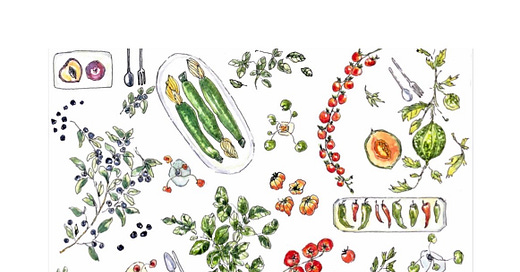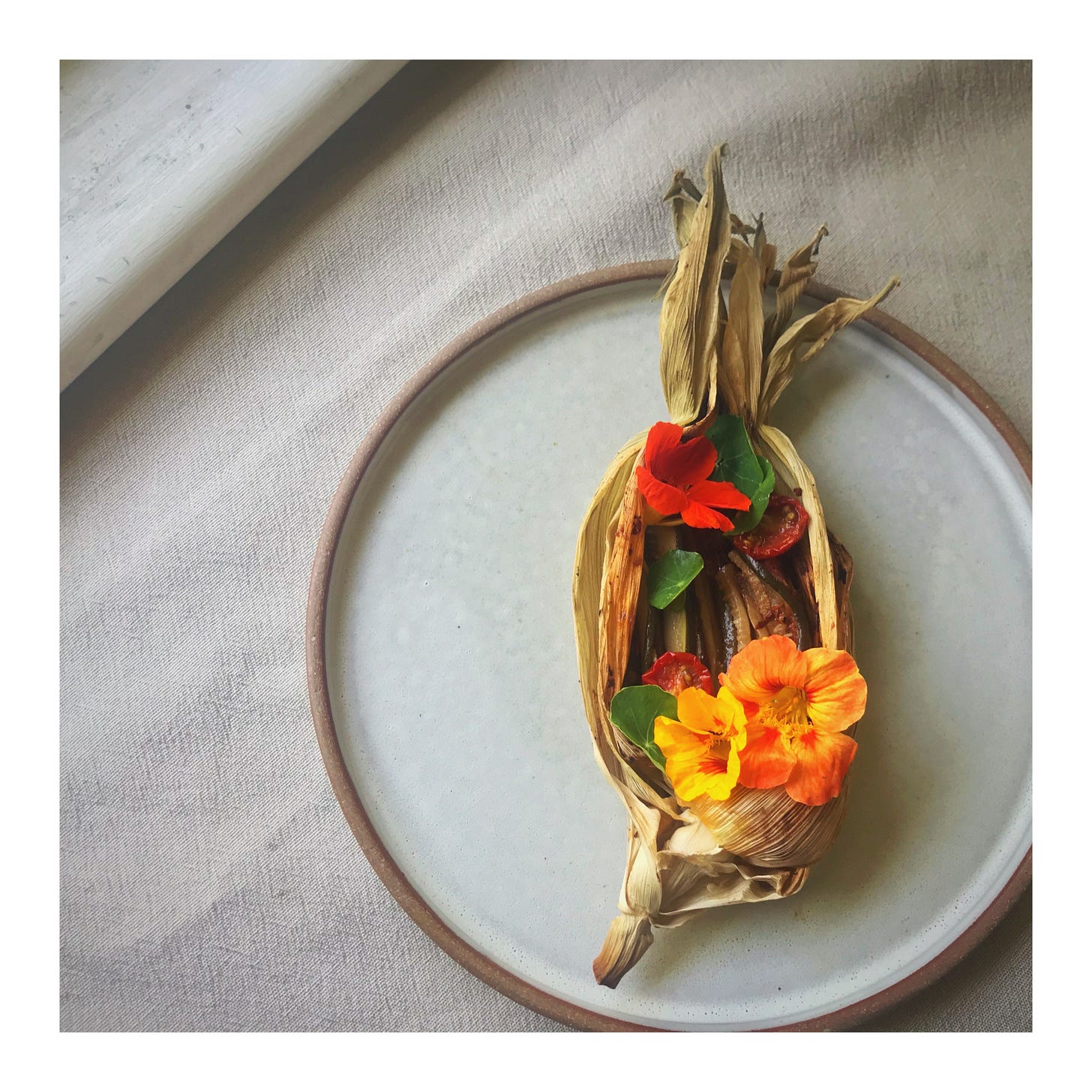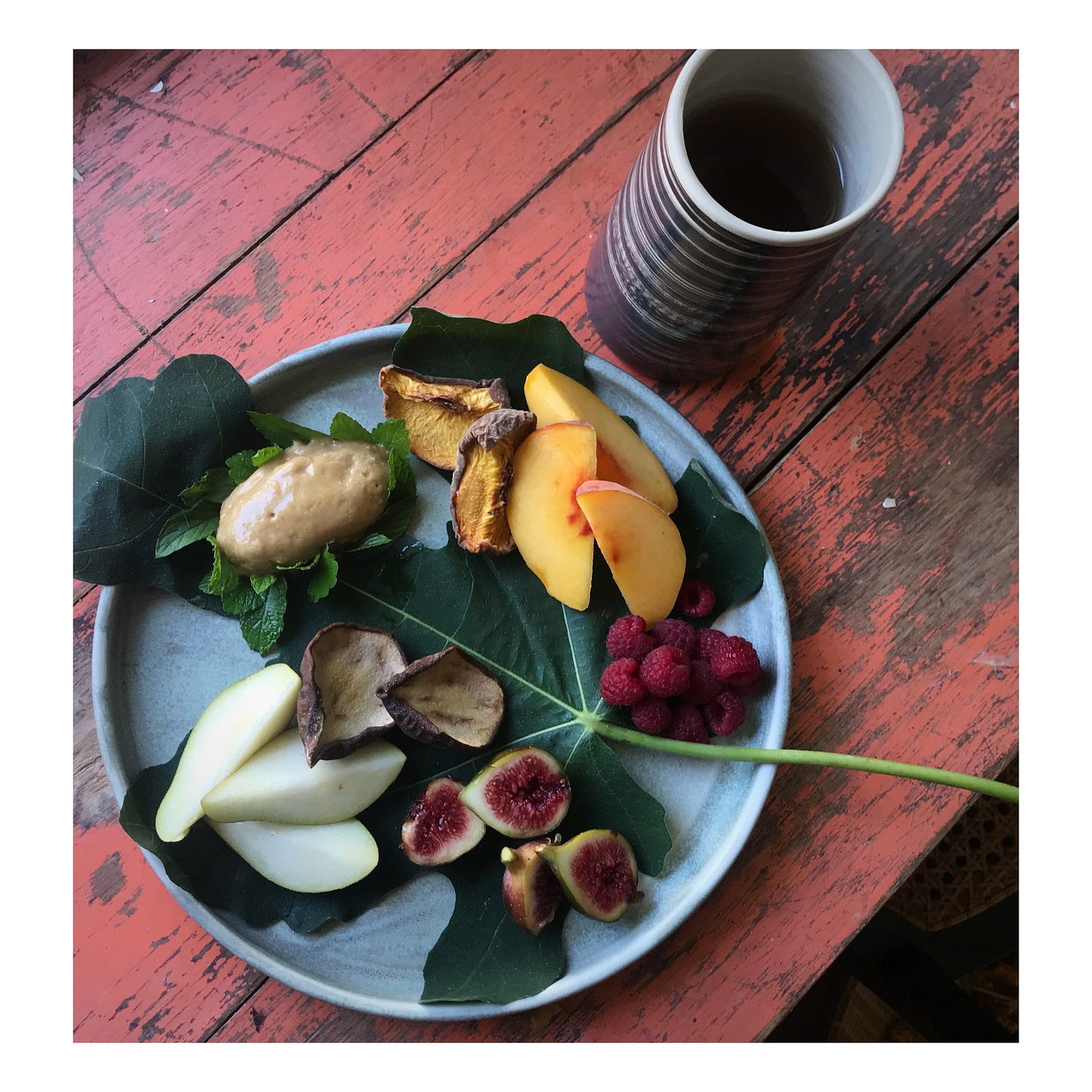Here all at once and all-consuming and then gone in a flash. That’s how summer always feels to me, though by mid September I’m relishing the transition of the temperatures and the colors and produce along with it. This is less a composed piece of writing and more of some patchwork thoughts from the last transitionary month, tied together by a foundational cookbook I was gifted recently called Cooking by Hand by Paul Bertolli, as well as by some photos that I just stumbled upon from a dinner I put on this same time a few years ago to celebrate the seasonal transition. That book, by the way, will be the centerpiece to a series of workshops I and other acolytes of the book will be teaching in Portland in November—stay tuned for more on that soon.

“I never feel that I have fully experienced summer until my tomatoes ripen.” -Paul Bertolli, Cooking by Hand
I’ve been cooking by color recently. Summer reaches out an imploring hand and I offer mine in return, all the vibrancy of its reds and oranges and yellows and greens clamoring to be witnessed. I choose my palette at the farmers market or from the fruit trees growing around the city and I get to work.
The yellows–mirabelle plums, calendula, yellow tomatoes, some melons–like sunshine in a bottle, with a brisk lightness to them. The reds–tomatoes, tomatoes, tomatoes, peppers and cherries–similar but deeper, riper, bursting. Orange fruits, the unsung apricot for one, somewhere in between, like honey, like an orange wine. Deeper still towards the magentas and inky purples of beets, red onion, plums, radicchio, and an element of earthiness, a warming spice or at least flavors that beckon it, starts to come through.
It was a dear friend in Asheville who first pointed out how special September’s produce is to me, when the last of the vibrant colors coexist alongside progressively earthier tones. It’s now my favorite time of year at the market like it is theirs. The last tomatoes clinging to the withering vines, the herbs beginning to stiffen, Kabochas and Honeynuts and figs appearing on market tables in their place.
“If the garden is a metaphor for the cycle of life, then ripeness is its most poignant symbol of mortality. We are planted; we grow, ripen, and return.” -Bertolli
There’s a way it all works, it would seem, at least in a temperate climate. I cooked in Japan this spring as the first shoots and buds appeared out of the ground. My job was to forage these most mornings and turn them into food by the evening. The color of the plants I picked was almost always green: grassy and verdant and full of chlorophyll. And the flavors were green too: bitter, pungent, and enlivening, to wake the body up from its winter dormancy.
This, and then summer’s sweetness, never more appreciated by me than after my time cooking in Japan. By late May and early June, when the strawberries and peas and cucumbers arrived, I could not get over how sweet they all seemed. Sweet, hydrating, cooling–antithetical to spring’s bitter tonics, and antidotes to summer’s parching sun. The flavors deepening into apricots and cherries and then, finally, summer’s annual epiphany, tomatoes.
All here and then gone. Ripeness “seems momentarily to cheat time”, writes Bertolli, but in actuality “is tragically short-lived.” Summer for me often brings about a dizzying confluence of euphoria and melancholy, the latter of which can seem out of place in both Minnesota and Portland, where the window for tomatoes and swimsuits alike is brief and glorious. I wonder if it’s because by adulthood, the maturing body knows that ripeness also signifies imminent decay. Fruit flies, at least, are in on this grand joke, appearing at the peak of summer to nudge along the rotting of peaches and tomatoes. Abundant water content means a short shelf-life, and ample sugars to nourish insects. A glimpse of winter appears at the peak of summer; “death,” as Bertolli bluntly puts it, “is a reaper.”
And so fall brings with it nourishment and sustenance. Sturdy produce of lower water content–the apples, pumpkins, cabbage, hardy greens–which will last into the winter. A roast butternut begs for butter and maple syrup, because the body needs an extra layer of fortifications for winter. Apples and pears, when cooked, demand what we’ve named “warming spices,” carminatives whose warming properties are no accident this time of year. Cabbages, rutabaga, turnips, all at home when baked in cream or served in a stew. And the colors, if I may, all slowly becoming more muted, the vibrancy being replaced by sturdier tones of mahoganies and goldenrods and ivories.
But the real treat for the keen observer: a second spring, of sorts. Lilacs and honeysuckle and jasmine and more are blooming all over Portland right now, the spring-like temperatures seeming to convince these plants it is time for one last romp. Purples and light yellows and whites that I largely forgot about during the summer, floral fragrances in abundance, if only for a moment. At the onset of decay and dissolution–a graying and a darkening–a fleeting reminder of what awaits on the other side.







